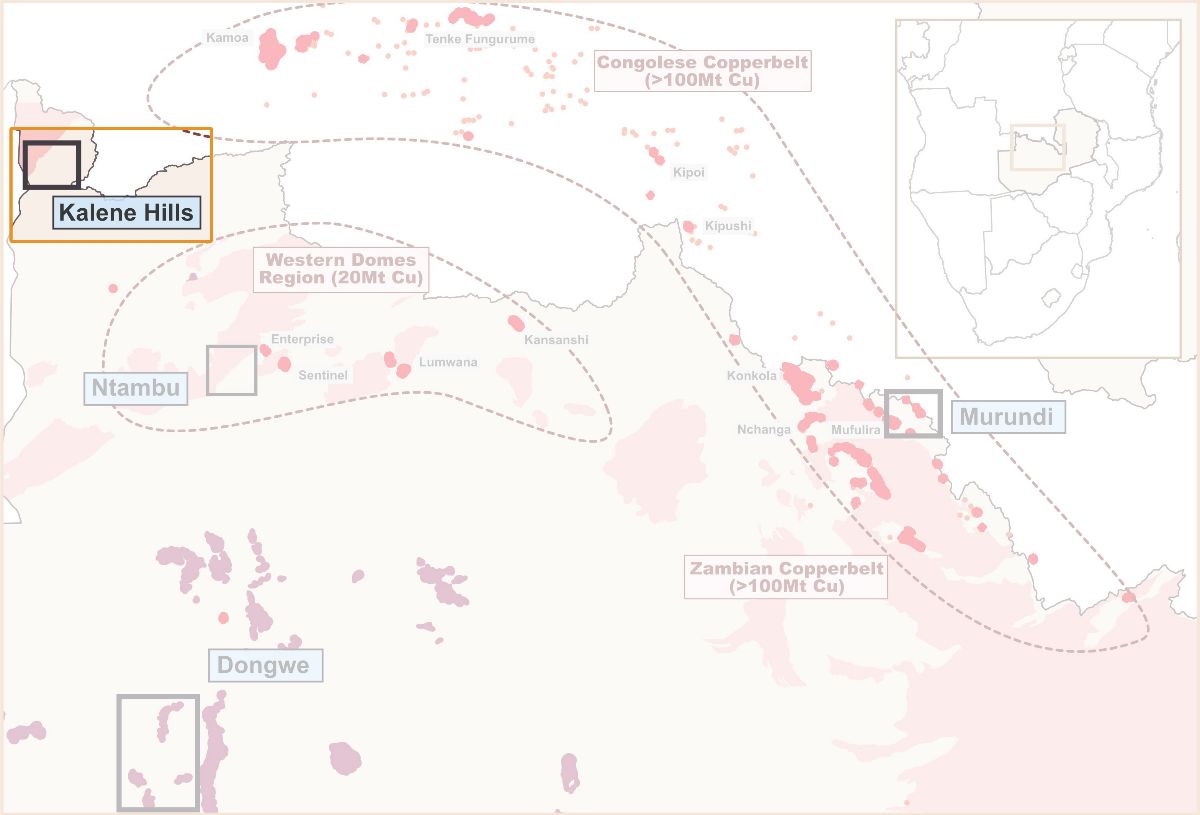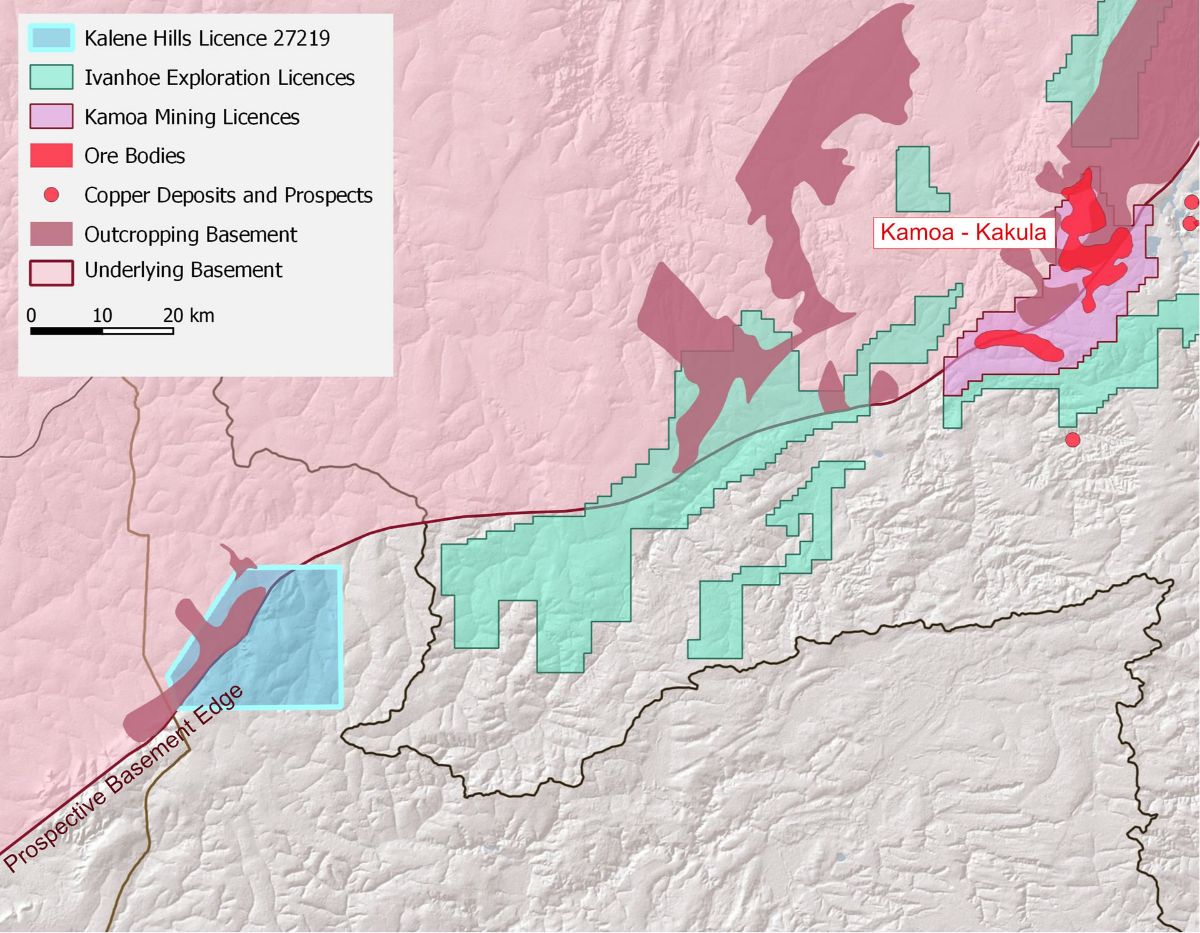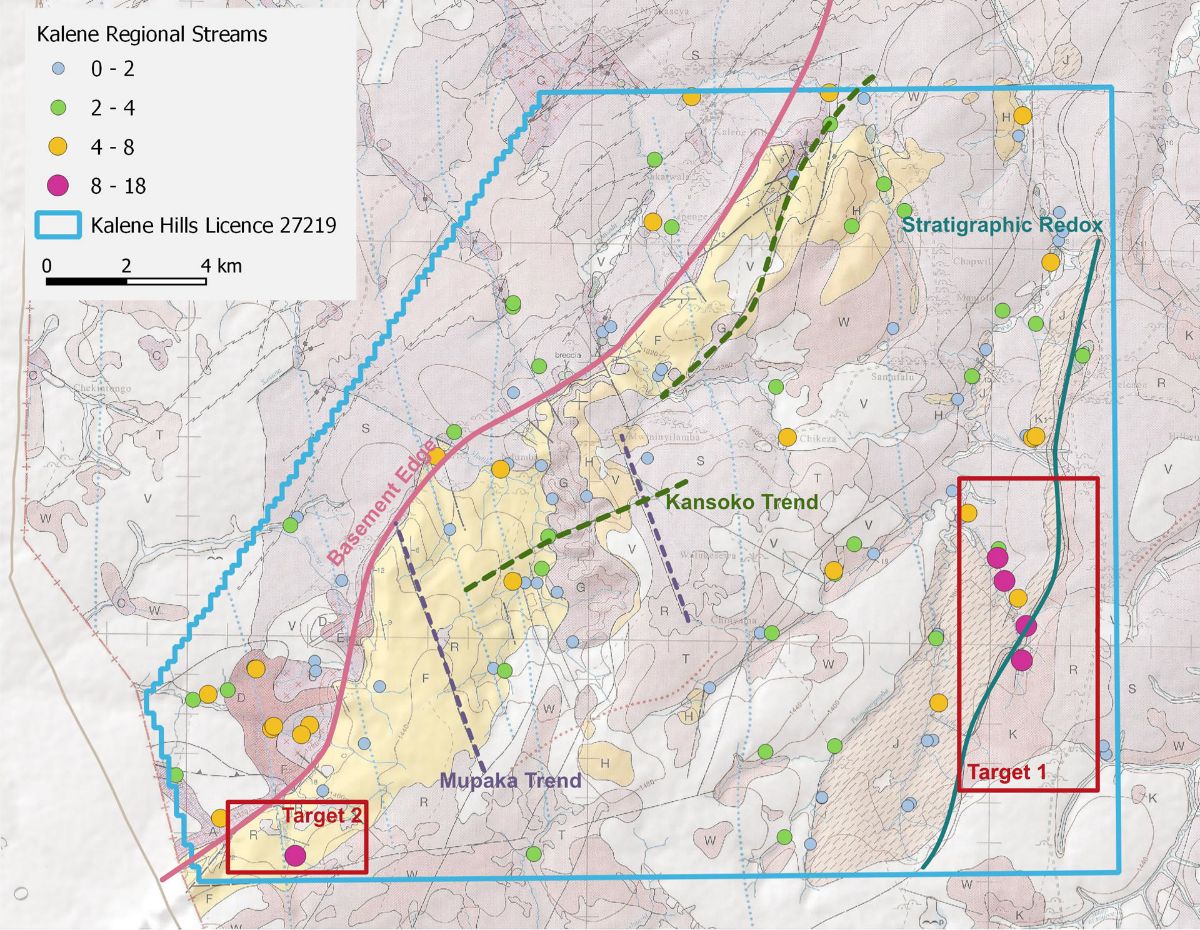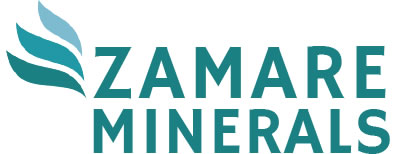Kalene Hills
Along trend from Kamoa

Licence 27219-HQ-LEL (402km²)
Kalene Hills is located in the far NW of Zambia in a narrow promontory of Zambia which projects north, with the Democratic Republic of Congo (DRC) to the east and Angola to the west. The licence is prospective because it is directly along strike and trend from the massive world-class Kamoa Deposit in the DRC.

Kamoa-Kakula is the fourth largest copper resource globally. It has been “independently ranked as the world’s largest, undeveloped, high-grade copper discovery in the world”. Kamoa’s 43-101 indicated resource is 1,387 Mt @ 2.74% Cu for 38 Mt of contained Cu.
Kamoa is owned by a joint venture including Ivanhoe Mines, Zijin Mines and the DRC Government. Ivanhoe Mines is listed on the Toronto Stock Exchange. The mine entered commercial production in July 2021 and phase I targeted production is 200,000tpa of copper.
See www.ivanhoemines.com/projects/kamoa-kakula-project/ for full details.
Kalene Hills is on strike from Kamoa and is on the contact between the ancient basement and younger Katangan series rocks, as is Kamoa. This contact between basement and the Katangan age rocks is prospective throughout the Copperbelt. As the map above shows, Ivanhoe Mines owns exploration licences along this contact from Kamoa almost to the Zambian border.

The Kalene Hills area is under-explored, with geological data over the licence sparse and inconsistent. Regional stream data identifies low level increase in background copper along a stratigraphic contact and redox horizon (Target 1) and a small elevation in copper on the basement edge (Target 2). Structural trends on the licence match those identified at Kamoa including the NE-SW Kansoko Trend (parallel to basement edge) and the NW-SE Mupaka Trend.
Limited previous work means that early-stage, cost-efficient work such as soil sampling and geophysical surveys are required. Kalahari cover is extensive across much of NW Zambia but mostly absent in the Kalene Hills area. Zamare believes that licencing problems and irregularities have prevented exploration in the past.






